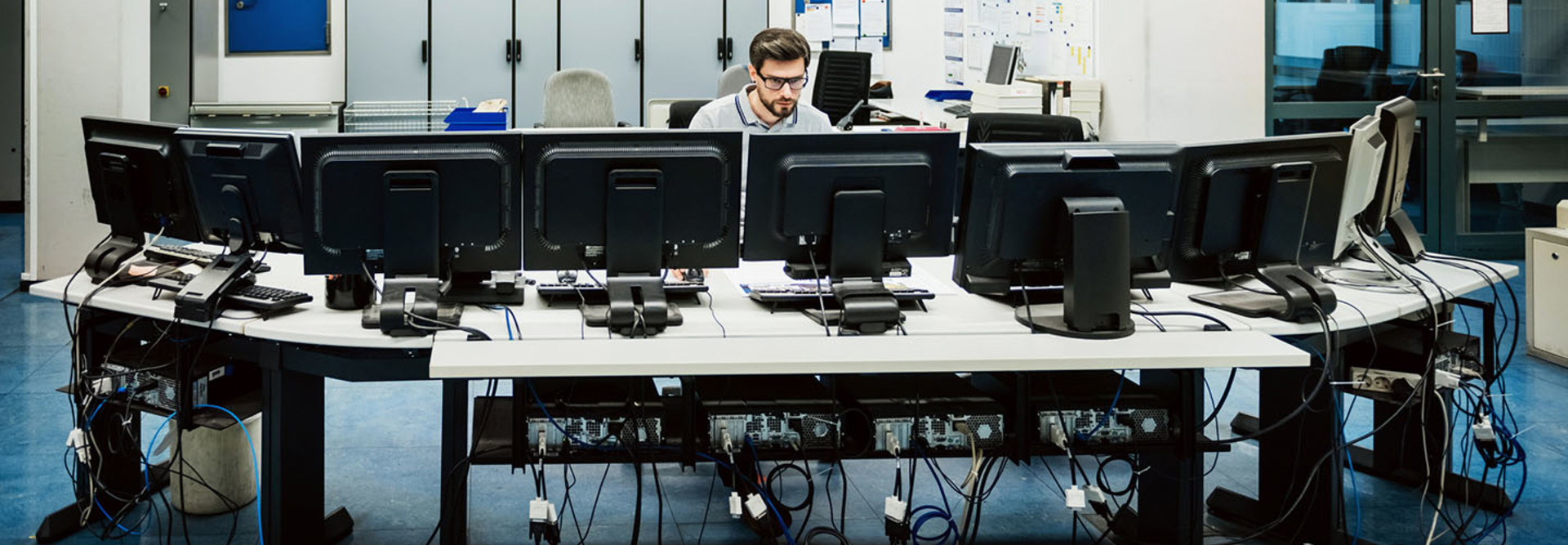How Network Automation Tech Can Lighten the Load for Federal IT
Federal networks are set to change. The General Services Administration is working with agencies to transition them to its $50 billion Enterprise Infrastructure Solutions contract, which will enable agencies to modernize their network infrastructures and embrace new architectures, including software-defined networking (SDN).
Meanwhile, advanced solutions are changing the way agencies design, deploy and manage networks. Next-generation network automation tools allow IT teams to deliver a network that is more secure as well as easier and more cost-effective to update, while supporting high-performance applications and uninterrupted services.
Many agency IT departments find themselves focused on operational tasks, leading them to miss the bigger picture. Many agencies remain focused on mundane operational issues, distracting attention away from the critical IT investments that drive business results. Modern network automation tools can help an agency reduce costs, create efficiencies and gain a long-term competitive edge.
As IT operations expand, networks are becoming more complex and difficult to manage. Network automation solutions, such as SDN and intent-based networking, can simplify things, enabling IT staff to focus on high-value projects rather than having to “keep the lights on.”
SIGN UP: Get more news from the FedTech newsletter in your inbox every two weeks!
Network Automation Can Increase Savings and Efficiency
A main cause of IT problems is change, such as when issues arise because of manual human errors, says Dave Signori, senior director of product management at Infoblox. “Network automation provides better visibility of the state of assets and their performance, detects and records changes, and provides a way to deploy planned changes quickly and efficiently,” Signori says. “With network automation, you eliminate inconsistency caused by a lack of monitoring and standardization in change processes.”
Network automation also eliminates the time wasted on managing daily networking tasks. “The network owners are now able to focus on building out automated monitoring and have better insight into their environments due to the automation of tasks,” says Destiny Bertucci, a head geek at SolarWinds.
Network automation significantly shortens the time needed for IT teams to deliver services to both external and internal customers, such as network provisioning, which is often the most time-consuming and manual process required to deliver IT services and applications. For example, software-defined networking solutions can automate functions such as load balancing and traffic distribution. In addition to handling these tasks without involving IT staff, this use case can prevent choke points and improve application performance.
By automating the configuration of network devices, IT teams can avoid the errors that often accompany manual configuration. “Automation provides a standardized approach across many devices, which eliminates mistakes with critical components and ensures consistency when multiple network staff are responsible for a common infrastructure,” Signori says.
With intent-based networking, an advanced form of network automation, IT staff can set precise high-level goals. Rather than simply denying access to certain network addresses, for example, specific end-user devices can be blocked from individual network resources. Or, the network can prevent access to specific resources, such as servers containing sensitive financial or legal data, from anyone except authorized users.
Agencies Can Boost Auditing and Compliance with Automation
Network automation tools are proving their value in a variety of use cases, such as network auditing and compliance. Compliance auditing, remediation and reporting can be done without manual intervention. Auditing rules can be periodically updated to keep pace with emerging internal or regulatory standards. Rules can even be provided by a network automation tool vendor on a subscription basis, which further removes manual operations and eliminates gaps in compliance.
Agencies that have trouble keeping up with rapidly changing technologies and government mandates are prone to failing compliance audits. “Automation ensures that compliant network policy is consistently applied to the network and helps avoid the potential for human error that may introduce compliance gaps,” says Matt De Vincentis, VMware’s group product marketing manager for networking and security.
Automation also provides a verifiable method for adding security compliance requirements to a network. Tools such as intent-based networking ensure that compliance steps have been taken, removing questions about whether IT staff have checked every box necessary on a compliance form. Intent-based networking also automates the continuous auditing of security policies. When a policy is violated, the issue can be automatically corrected and reported.
Agencies Can Improve Network Visibility with Automation
When networks are automated, their configurations are typically stored and deployed through centralized configuration management or cloud management systems. Network automation tools detect and track all network configuration changes. Regardless of whether a change was automated or made manually, all configurations are tracked, along with when they were put in place and who made the change. This eliminates the need for manual tracking, which is tedious and repetitive.
Automation also streamlines the troubleshooting of configuration errors. “If errors do occur, the troubleshooting efforts can focus on the centralized network configuration blueprint rather than looking at each instance individually,” De Vincentis says.
Configuration issues that affect network health can be identified immediately. Since all configuration changes are tracked, searching across the configurations for changes that have been made over a specific period of time can help identify where problems may arise.
Network automation solutions also offer deeper visibility than traditional monitoring tools, providing device and endpoint discovery, including clients attached to wired and wireless networks, as well as detailed identification and fingerprinting of such assets.
“Seeing the whole picture provides the ability to fluently understand how the network is orchestrating,” Bertucci says. “Rapid provisioning, which could take weeks or even months to implement, is now reduced to minutes and even seconds.”
Learn more about how CDW’s solutions and services can help your agency improve the efficiency and performance of its networks.








